
Drawing tablets without a screen have a few advantages over all others.
Today I’m going to talk about each one of the advantages and disadvantages of these devices and make recommendations about which one you should buy.
Why should you pick a drawing tablet without a screen over another that does have its own screen?
I have already mentioned this multiple times: throughout the dozens of articles within this website: drawing tablets that do have a screen offer a superior user-experience and tend to be a lot more fun to work with.
That being said, there are many reasons why drawing tablets without a screen are still being sold up until now and I will explore each one of them:
Affordability / Price
Most people who decided to go for a screenless drawing tablet when purchasing their first-ever device did so because these tablets are cheaper.
Since the raw materials and technology necessary to develop these graphics tablets tend to be much cheaper, their end product will obviously reflect this.
Portability / Transportation
A drawing tablet that doesn’t have a screen will always be better to carry around. Whether you like it or not, screens are much more fragile and they will break because of any minimal impact.
How many cracked cellphone screens have you seen in your life?
Probably several.
Since drawing tablets are larger than cellphones, their screen breaks even more easily. All it takes is one wrong movement and your tablet may fall from the table forcing you to buy a brand-new device.
Don’t let anyone tell you that screens are replaceable and that you could get a new one in case of accidents. This is not the case!
Changing the screen of a drawing tablet is so expensive that, in most cases, it will cost just as much as you would have to spend to buy a completely new device.
Although I do prefer to work with tablets that have a screen, whenever I’m in a hurry and have to storm out of my house, I prefer to take basic graphics tablets that can be simply thrown inside my backpack.
Another good reason for getting a screenless drawing tablet is travelling. If you travel a lot and wouldn’t like to run the risk of arriving at your destination only to see a shattered screen, a cheaper tablet with a regular plastic drawing surface is a much safer bet.
Durability
I bought my first drawing tablet in 2004. It still works just like in the day I bought it.
The fact that screenless drawing tablets have fewer moving parts grants them a durability that is unimaginable for tablets that do have a screen.
I have literally lost count of how many times I dropped my old graphics tablet on the floor. That little guy is tough as a brick and will work no matter what happens to it. As long as you don’t let your tablet get wet, it will work for more years than you will need it.
The only observation I would make is that you should never let a battery sit inside of a pen for too long, otherwise it will leak and corrode the casing over time. While my screenless drawing tablet is intact, I have lost a couple of pens because I simply forgot to remove the battery before storing the pens on my drawer.
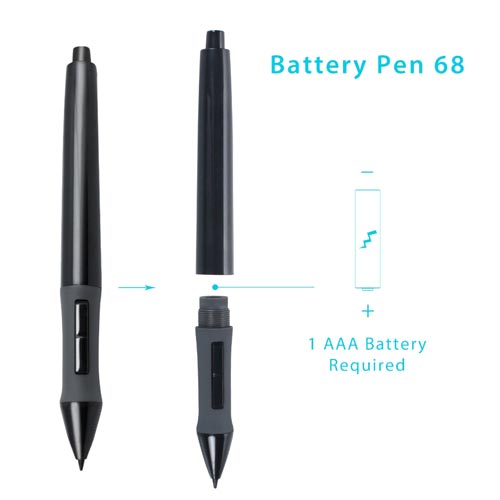
Reliability
Drawing tablets without a screen are extremely reliable tools. They simply work. You don’t have to charge them, you don’t have to worry about bad color display, you don’t need to think about image sharpness, you shouldn’t worry about scratches since they don’t interfere with functionality and so on…
These graphics tablets are great because you know that they will work even when the circumstances aren’t optimal.
Just to give you a brief example, yesterday I decide to use one of my older drawing tablets that has a screen (I need to do this every few months in order to keep it working without on the long run) and I noticed that the screen has been getting increasingly darker and that the tablet sometimes shuts down without any apparent reason.
Why is this happening?
Well, that drawing tablet is quite old and screens don’t age so well, especially if you compare them to the other alternative, which is a drawing tablet that don’t even need a screen.
Hand-Eye Coordination
One of the most valuable aspects of a graphics tablet that has a screen is that you don’t need any special hand-eye coordination skill in order to use it. Since you can see exactly where each stroke goes, anyone who uses a device like this one can start drawing right away. I’m not kidding. Even little kids are successful in their first attempt.
However, drawing tablets that do not have a screen require a very well-developed hand-eye coordination because they’re hard to use in the beginning.
It takes a lot of practice and, most importantly, patience before you actually master the ability of drawing on a plastic surface and seeing the result of your movement on a screen in front of you.
That said, hand-eye coordination is a vital skill for artists. The more you develop this skill, the faster and more accurately you can draw.
The cool thing about these drawing tablets that have no screen is that they force you to practice your hand-eye coordination to the limit every single time you use them, which naturally makes you a more skillful artist.
Artist’s Job Market Value
I used to own an art studio and I would always prefer to hire people who could also draw on tablets that don’t have a screen.
Even though tablets with a screen are becoming the standard all over the world, picking artists that do know how to handle older devices almost guarantees a few things:
- The artist has some experience;
- If for some reason an expensive drawing tablet brakes during the day, the artist will still be able to use a cheaper device to turn in his work within the established deadline;
- The artist is more versatile than his counterparts. And versatility is an incredibly valuable asset to any professional that need to work with creativity.
Who should buy a drawing tablet without a screen?
Beginners
If you’re just getting started you have two options:
- Get the only cheap tablet that has a screen, which is the Simbans PicassoTab;
- Buy a decent tablet that does not have a screen, the usual recommendation is the Wacom Intuos.
People who travel
As I’ve mentioned before, anyone who needs to carry their drawing tablet around would greatly benefit from owning a graphics tablet without a screen.
Professionals
Those who already have drawing tablets that have a screen could also purchase a screenless tablet as a secondary device for emergency situations such as failure of the main tablet or drawing in unusual places.
Who should not buy a drawing tablet without a screen?
Anyone who would like to draw on a professional level on a daily basis and needs to meet deadlines should go for a better drawing tablet that do have a screen.
Screenless drawing tablets have limitations, they’re simple devices and working with them is objectively a slower experience.
Whenever user-experience is compromised, which is exactly what happens with drawing tablets that do not have a screen, the artist’s ability to work faster also suffers.
What’s the best drawing tablet without a screen?
This is debatable and it all depends on what you’re looking for. What I can tell you for a fact is that most artists that work for the big studios nowadays have started their career with a device similar to the Wacom Intuos (check it on Amazon). So, this would probably be your best bet.
If you would like to see all the other options, I have compiled a list with the 10 cheapest drawing tablets, make sure to check that post before making a decision.
What’s the worst drawing tablet without a screen?
Unless you’re really, really short on cash, you should probably stay away from tiny drawing tablets. Even though they can be used for art creation purposes, their drawing area is so small that you will need to use the zoom tool thousands of times if you want to draw anything of decent quality.
An easy way to find out which tablets fall under this “tiny tablet” category is by looking at the work “signature” in the product description.
Signature tablets are made for signing digital documents, that’s why they’re so small, but since artists don’t know any limits, they will still use these devices to create amazing illustrations.
To make this as clear as possible, I will give you two tips about how to spot a signature tablet:
- The work “signature” appears on the product description;
- The description also mentions that the tablet can be used to play a game called “OSU”.
Among the most popular signature tablets you will find the Huion 420 and its successor, the Huion H420.
Conclusion
You’re the only person capable of actually deciding whether a drawing tablet without a screen would fit your need. However, you should not worry do much about this choice because regardless of the presence of a screen, what defines the quality of the final artwork is the artist, not the tool that was used.
Although picking the right tool can make your life slightly easier, at the end of the day a great artist can draw with pencils, pens, charcoal, brushes, sand, trash…it doesn’t matter.
The most important thing is that you keep on practicing and developing your skills.
If you have any questions, make sure to leave a comment below.
Bruno Santos

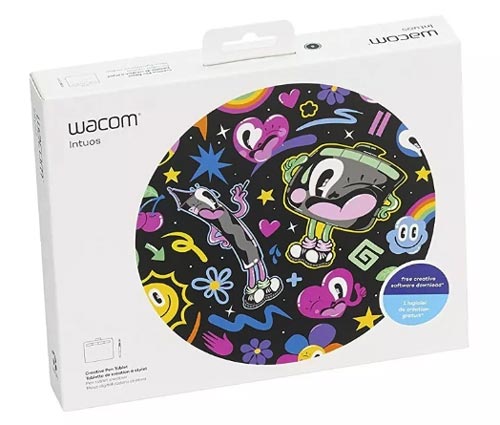
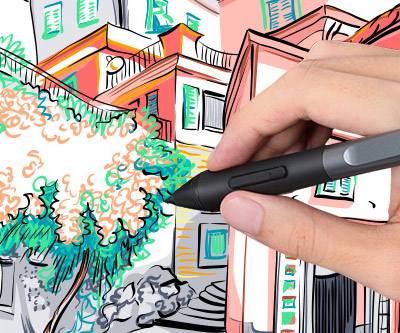
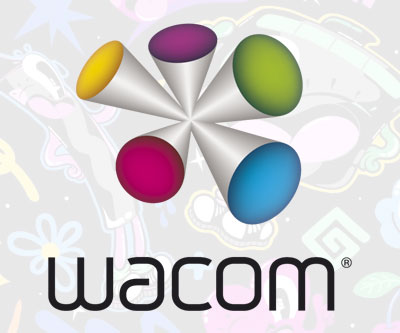


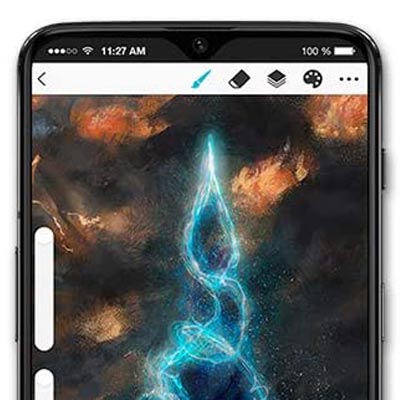

Can you make a tutorial preferably on youtube on how to build a display drawing tablet
Hi Ethan,
Wow! That sounds ambitious! I will research more about this topic, this is a completely different angle from the sort of content I create, but I really like it.
Thanks for the idea =)
Hi and thank you for this informative review. It would seem that for the money, you get a more powerful tablet if it doesn’t have a screen. As a fine artist who nevertheless needs to do some infrequent digital illustration, I’m all about pen pressure for opacity and tapering. I can learn the hand-eye thing no problem (I’ve been drawing with PS on my PC for years). I want to create subtlety in my brush strokes — say for hair, fur and skin tones. Would you say the Intuos Pro is a better bet than a tablet of the same price (or less) with a screen? THANK YOU!
Hi Constance,
The Intuos Pro is extremely reliable. It’s one of those devices that are really basic, but that deliver results as expected. Every time.
That said, I still prefer the feeling of drawing on a screen, even if the drawing tablet that I’m using is not as good as an Intuos, meaning it won’t last as long or work as predictably.
The hand-eye coordination required for ‘screen-less’ tablets and drawing/playing using a mouse should technically be the same, shouldn’t it? Just curious 🙂
I am about to purchase my first-ever graphic tablet. Your blog was really useful in helping me decide! Thanks for putting it out there 🙂
Hi Sarah,
Using a “screen-less” drawing tablet is much harder than using a mouse, trust me! That said, eventually you will get used to it. All it takes is some practice.
I must mention, however, that absolutely everyone that I know prefer to draw on tablets that have a screen. These devices simply offer a better drawing experience.